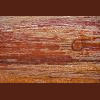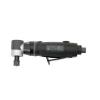-
Content count
453 -
Joined
-
Last visited
-
Days Won
1
Posts posted by fireandrain
-
-
As always, well done, Rick. Nice post-strip photo as well, I'd love to see the same shot BEFORE you initiated said tightrope walking act! Also, I'm curious how you managed the masking of the house and the vertical columns... Well, great job, I hope you were fairly compensated for such a brilliant performance.
-
Well I begin a Acrylic Strip next week and I'm in pre-flight mode I guess you could say, just reviewing the project photos I took a couple weeks back of this project. My big concern, the one I';m really wrestling with has to do with how to handle a heavy strip of the portions of this redwood deck which are DIRECTLY above a nice green lawn...
A few job notes:
1. Heart Redwood Deck, Appx. 15 years old.
2. Current Existing Finish: "ACE WoodRoyal" Acrylic-Alkyd Semi Trans. Failing on floor, intact on vertical.
3. The Current Plan: Strip NaOH followed by floor and vert sanding.
Have a gander at the photo here, but my big concern is how best to avoid killing this nice green lawn that surrounds the deck and is located directly below these benches.
Here is my current thinking.
Option #1: Heavily water down the lawn (say 5 ft. out from the benches). Lay some tarps down on the lawn, perhaps alternating layers of canvas and plastic tarps. Hit the back-side of the benches 8oz. p/g NaOH. Rinse.
Remove tarps carefully with a helper, hopefully being able to dump stripper run-off away from lawn area.
Option #2: No stripper use on back side of benches. Instead, remove old acrylic finish by sanding.
I'm leaning towards Option #2. The main issue I see with this approach is the following: The vertical surfaces of the benches are constructed with tongue and groove redwood siding. The stripping approach in Option #1 would allow me to strip the old acrylic from between the cracks, or the "grooves" of the bench siding material, however, if I instead take the sanding approach, I may not be able to sand out the old acrylic in the horizontal grooves of the benches.
Does this make sense?
So, to strip or sand, this is my dilemma! Strip and may end up killing these nice homeowners beautiful green lawn around the benches. Sand, and I may be left with old acrylic stain stuck in the grooves of the tongue and groove bench "walls", the backside, above the lawn.
Final note: I'm hesitant to do any aggressive sanding to remove the old finish on the leading edge of the bench siding for fear of disfiguring the horizontal grooves of the benches. Does that make sense?
I'm left REALLY wanting to be able to strip these benches so I can remove all of the old acrylic from he cracks of the "grooves".
Question is, how can I accomplish this without killing green law that my stripper will run-off to? Will temporarily tarping the lawn beneath those benches to enable me to do a heavy strip kill the law as well? The last thing I want to do is have my clients return from their vacation to a professionally restored deck with a dead lawn surrounding their deck.
Any input would be greatly appreciated and sorry for the long-winded post!


-
Rick, great looking set-up! I built a second deckster this year in order to dedicate one for sealer. I learned alot about the unit taking it apart and re-building a 2nd one. Your set up looks fantastic. Love the labeling. My kind of cake.
-
Rick,
Nice work, as always. You brushed up the furniture,no? I've always had good results spraying my teak chairs, chaise-lounges, etc. with RS. Walk away for 20 min. and hen wipe down. Great work. I like the light brown on the IPE. I've always used Med Red when working with IPE. Will have to try the Lt. Brown next season! Incidentally, I've been following your IPE test... Planning on working with AC on my next you-pay project. Love that wood. Then again, I don't build them....
P.S. Had a nice chat with Jake last night... gave me the lascivious details on Orlando. Really wished I could have made it out. Heard your presentation was top drawer.
-
Scott... Can you somehow get me counted as one vote for Lyle? I couldn't "log-in" to vote on the AC site... Lyle's work deserves the accolades. Awesome woodie.
-
Rick,
Great work, as always. Is that RS Med. Red? Looks fantastic. I have really come to love IPE!
-
Lyle IS a bad ass. I've seen it with my own eyes. This guys work is tippy top for our area, bar none.
-
Rod,People in Calif. are odd,
DDO? Odd we not are not we are in calofornea!
-
Keith,
You will finds LOADS of information in past threads that should help you with this project. I would go with the HD-80 at 6oz. p/gal. Based on the photos you provided, in whether you use EFC-38 or a stripper such as HD-80, you will need to plan on de-furring this deck once cleaning/stripping is complete. It should only require a light de-furring, being a hardwood.
Best of luck, but seriously, get friendly with the search function on this board. If you are serious about learning more about exterior wood restoration, that search bar will be your best friend.
-
Makes sense, Rick. Is the photo you attached (handrail) an RS Med Red/ Dk. Brown mix? Like Chocolate. Me liketh.
-
Rick,
Another note. Interesting observation re: straight oxalic on Ipe. I had never heard that before. I'm doing a restore on a set of IPE's next week myself. Decks were built a year ago and "sealed" with Peno-Fail. Well-intentioned son of homeowner went at trying to remove the failing finish with a pressure washer....quite a mess w/ stop start lines all over the floor. Good thing it was Ipe!
-
Rick,
Great to hear that your season is about to begin! On that IPE which you plan to seal with RS... Which color do you like? Have you ever used RS Dark Red on Ipe?
-
Don't be goofing about with SH and strippers.
-
Got it all figured out today... thanks for the input folks... I'm feeling stupid... answer was right in front of me! I'm all rigged up...multiple lance lengths all set up with QC's...
-
DUHHHHH.... Sorry people..... I get it! Simple:
1. Connect 1/4" QC at spray gun (im assuming thats ok on the adjustable spray gun from sunbrite?)
2. Use ANY length standard stainless lance... set up with QC's
3. Attach cone-spray tip at end of each lance.
Done... Right? :)
-
Sorry if that question was a bit vague... Yes, I'm using the Deckster set up... The existing lance is 3ft. long with the curved shaft a the end. I'll take from Rick's thoughts, that I can just remove this existing lance, set up 1/4" QC at the gun, and treat my adjustable spray gun just like I do my pressure washing set up...that is QC's on all my lances of various lengths...
I think I understand you straight, Rick. On that 6ft. extension lance...Rick, did I understand you correct that this is a 1/4" 6ft lance to be used hen spraying sealer?
-
I've been hunting around all night for an extension for my spray gun... (for spraying sealer)...something in the range of 6ft? Maybe telescopic?
I remember Shane posting a picture of his set up awhile back... Can't find anything online...I'm using an adjustable spray gun with the standard appx. 3' lance with curved end... If anyone could point me in the right direction I'd appreciate it! Seems like such a simple thing to find, and very useful to have in the toolbox...Having one heck of a time tracking one down.
Thanks.
-
I'm thinking that it would need to be variable speed...
-
Old, weathered redwood decks. That's what I get. Nearly impossible to avoided furring. Defurring with a the usual variable speed 9" not practical when dealing with the insides of spindles. Too big, difficult to control without dinging the top/bottom rails...
Methinks... Is there a better way, mechanically speaking to de-fur spindles? A natural thought for a guy who has had his helper manually de-furring 725 fuzzy old redwood spindles on this week's project.
Has anyone given thought to the idea of enlisting a small pneumatic right angle die grinder to the task of de-felting spindles? Think mini right angle buffer...big enough to handle the RPM's, but small enough to efficiently work the insides faces of the spindles...
Small air compressor, 100' of air hose, one of these small single-hand held pneumatic die grinders fitted with 3-4" black defelting pad.
It's been a long day. It's midnight. Have I lost my freakin' mind or am I onto something?
-
C'mon...back to offices! Rick, I think you started this....No wait, was that Kevin who posted Jake in his office? In any case, I think it's time we all confess our sins and commit to an all out "Office-Off"! I know I'm not the only one who wants a glimpse of Kevin's office...
-
...still giving consideration to cleaning approach on the yellow cedar.... it's been awhile since i used bleach on a deck... concerned about the mildew growth on the floor of this deck. wondering if the usual sod. percarb brew might be a waste of time with this one...
Close to deciding on my sealer...thinking AC Cedar Trans.
-
Thanks Rick. Jim, I appreciate your willingness to advise on this one, I will definitely be giving you a jingle.
The background information provided by the homeowners was spotty. Among their recollections was that prior staining faded very quickly. This deck was built appx. 15 years ago and the original homeowners coated it with what the new homeowners could only describe as...."paint-like finish", barnyard red! The new homeowners had the deck sanded to removes the old finish, and then re-coated with a semi-trans "driftwood" finish...manufact. unknown.
Apparently, the new 'driftwood' semi-trans. faded within a month. I'm new to Cedar restoration, but one thought that came to mind was that the wood had been burnished...
-
-
This will be my first big restoration project of the season and it’s looks to be a real kick in the pants! The deck is Alaskan Cedar. This will be my first cedar project…deck has little to no failing finish present. There is the large main deck and two other decks (split-level) on the side. The gazebo is really something to behold. I had been eying this project for the last couple of seasons and finally go into production next week.
Cleaning: My initial approach was to go sodium percarb on the cleaning. However, I’m beginning to think the bleach route may make the most sense considering the presence of fungus on this deck. Bleach makes me somewhat uneasy about all that surrounding vegetation...maybe i'm over reacting though.
Sealing: Torn between AC and RS for the sealing. Still pondering this decision. This promises to be a portfolio project and I really want it to look smashing. Deck has not been cleaned or sealed in 4-5 years. This may weigh heavy into my selection on which sealer to use. Just love my RS but have to say that I was impressed by AC in a heartwood project a couple months back.
Homeowner wants the deck to look more “gold” on the color scale.
I’d love some input from all you East-Coast Woodies on this Cedar project... Any last minute advice always appreciated…













Masking Strategy for Acrylic Strip Directly Above Green Lawn??? Aye Yaye
in Wood Cleaning & Restoration - Decks, Fences, etc.
Posted · Report reply
Thanks for three pro opinions! Starting the job on friday. Will take some photos. Much Thanks Rick,James, and Lyle.